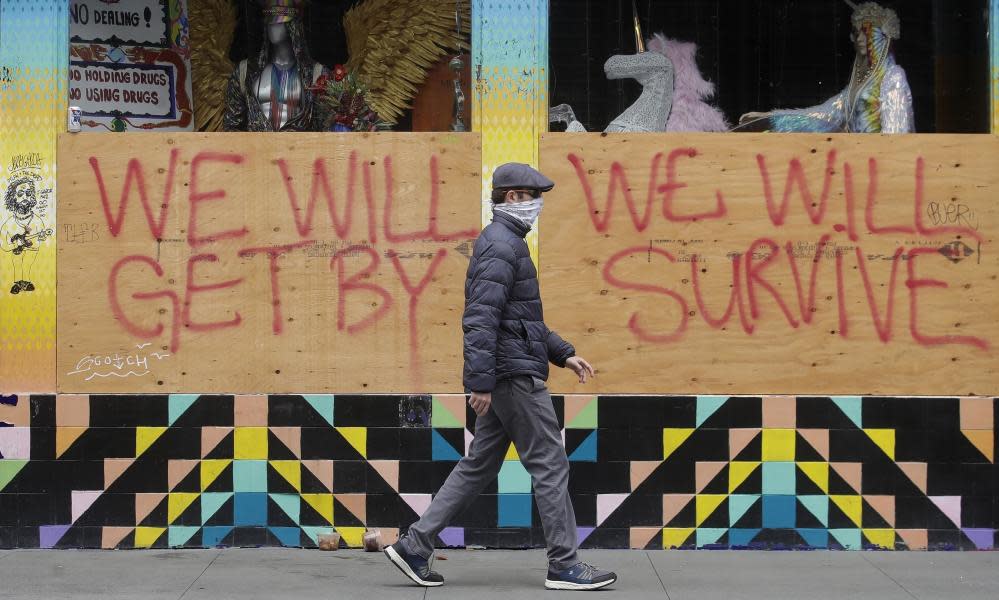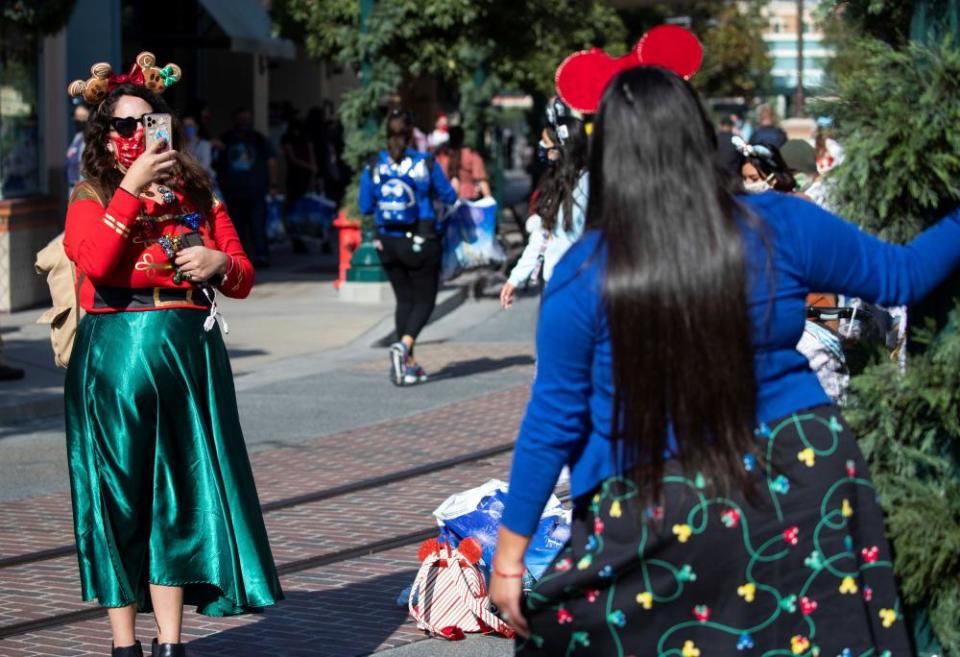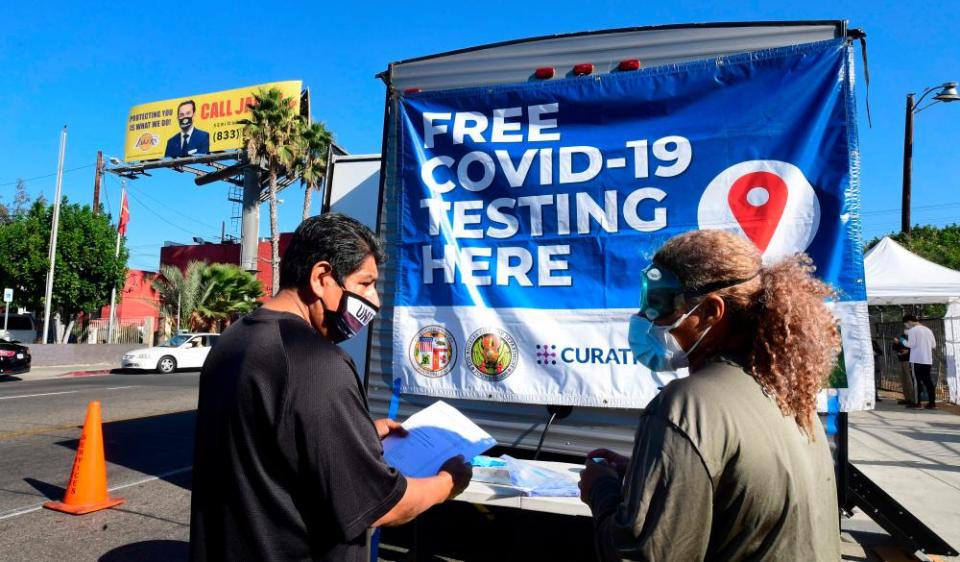California's coronavirus curfew: what are the rules and will it work?

The nation’s most populous state is heading into the weekend facing its most serious coronavirus restrictions since its stay-at-home order in this spring.
California’s governor, Gavin Newsom has ordered a curfew on all indoor social gatherings and non-essential activities outside the home across most of the state, in a major escalation of measures to curb an alarming surge in infections. The move came just days after Newsom announced he was pulling the “emergency brake” on reopening, returning much of the state to the highest risk category for the virus.
So what will be allowed, and will it work? Here’s everything you need to know.
What are the new restrictions?
The new curfew restrictions, which go into effect on Saturday, will last from 10pm until 5am each day. They are due to end on 21 December, but could be extended longer if needed. Los Angeles also instated its own curfew with similar regulations that can be extended even if the state mandate expires.
The order will be implemented in 41 of the state’s 58 counties, where the virus is spreading most rapidly. Those 41 counties comprise the vast majority (94%) of residents.
The curfew is less strict than the near-total ban on nonessential business and travel that Newsom imposed in March, and which he credited with flattening the rate of Covid-19 cases, despite a summer peak.
The new order does not close any businesses. However, nonessential businesses must shut their doors by 10pm, though restaurants will be permitted to offer takeout and delivery after that time. The directive does not apply to people who are homeless.
People can perform some routine activities such as walking dogs, officials said. They will still be able to get medical care, pick up prescriptions and take care of other essential needs.
Why is this happening?
The new restrictions come as California faces its most serious surge in cases since the pandemic began.

Hospitalizations are up nearly 64% in two weeks and the positivity rate has increased more than 50% and now stands at 5.6% for the last seven days. Both California as a whole and the city of Los Angeles in particular broke records this week with unprecedented surges. Los Angeles county saw nearly 5,000 new coronavirus cases on Thursday – according to figures from the Los Angeles Times – the most it has seen in any one day since the pandemic began. The data also found that across the state a record 13,422 new cases were also reported on the same day.
“The virus is spreading at a pace we haven’t seen since the start of this pandemic, and the next several days and weeks will be critical to stop the surge,” Newsom said in a statement announcing the measure.
About 12% of positive cases end up requiring hospitalizations, Ghaly said, meaning that based on just the one-day total about 1,200 people will be in hospitals in the next two to three weeks.
“There is no single culprit” for the hikes, Ghaly said, but among other things he cited people mixing more both indoors and out, especially for celebrations and holidays such as Halloween and ahead of Thanksgiving, when many will be tempted to gather with family and friends.
.
Is California alone in taking this step?
California is not the only state in the US taking measures to restrict nighttime activities to slow the spread. Governor Andrew Cuomo of New York imposed a similar order on 13 November that set a 10 pm curfew at bars, restaurants, and gyms and limited the number of people allowed at in-home gatherings to 10.
Stephanie McCloud, director of Ohio’s Department of Health, signed a health order on Thursday mandating Ohioans stay home between 10pm and 5am until 10 December. It offers similar exemptions to California’s order, allowing people to seek medical treatment, pick up takeout, go to work, and go grocery shopping. First amendment activities and religious services may also receive exemptions.
Violating the order in Ohio can lead to 90 days in jail and a $750 fine, though it is not expected to be strictly enforced.
Do curfews work?
The decision to impose curfews in California, Ohio, and elsewhere has faced intense backlash from those who oppose restrictions on businesses. Newsom’s order is a “huge overreach,” said Republican California assembly member Devon Mathis, especially considering a vaccine is on the horizon (Pfizer applied for an emergency permit to start issuing vaccines today).

“They’re clearly targeting people having parties,” Mathis said.
Republican state assemblyman James Gallagher sharply criticized the governor’s action, saying, “An arbitrary curfew will only further decimate struggling businesses that already face some of the toughest hurdles in the country.”
Sacramento county’s sheriff said in a statement Thursday afternoon that police forces there do not plan to enforce the curfew, whileFresno said it was counting on residents “voluntarily” complying.
Other California leaders have voiced support for the measure. Robert Garcia, the mayor of Long Beach, said Thursday it “will save lives and provide relief to our hospitals and healthcare system”, and urged other states to follow California’s lead.
The efficacy of such policies has been called into question. Experts at the Johns Hopkins Bloomberg School of Public Health, one of the foremost resources on the coronavirus pandemic, said the best way to slow the spread of coronavirus is “closing high-risk activities where the epidemic is worsening and reinstituting stay-at-home orders where healthcare systems are in crisis” – not impose curfews.
In fact, some say the measures may increase the incidence of indoor house parties that are being blamed for the current spike.
“The epidemiology shows that this is happening at private gatherings in homes, and I wonder if a curfew would just create even more of a desire for people to have private gatherings,” said Dr Amesh A Adalja, senior scholar at the Johns Hopkins Center for Health Security.
Agencies contributed reporting.
